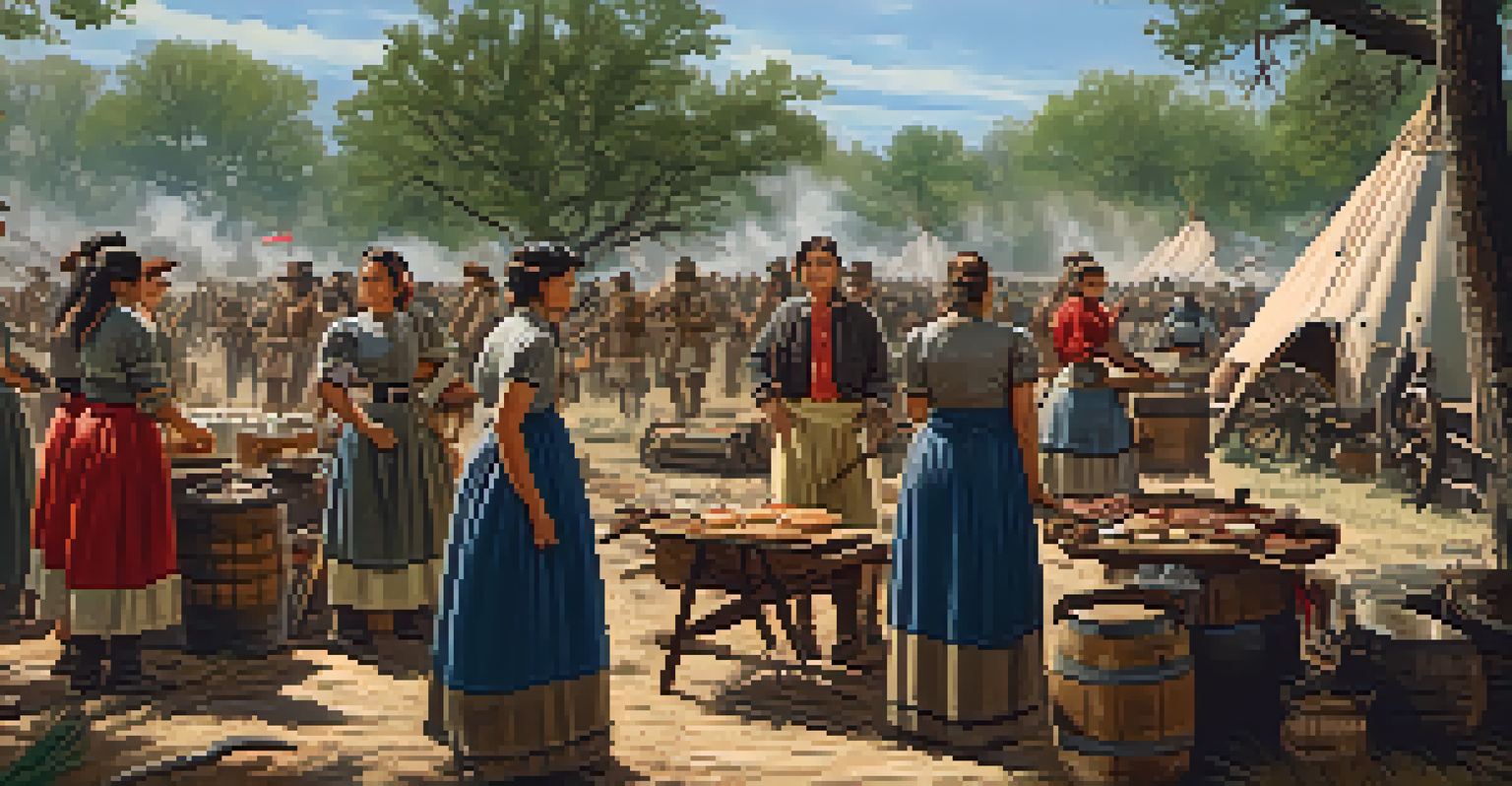The Legend of the Battle of San Jacinto and its Myths

Overview of the Battle of San Jacinto
The Battle of San Jacinto, fought on April 21, 1836, was a pivotal moment in Texas history. This short but fierce battle lasted only 18 minutes, yet it changed the course of the Texas Revolution. Led by General Sam Houston, Texian forces launched a surprise attack against the Mexican army, resulting in a stunning victory that secured Texas independence.
Those who cannot remember the past are condemned to repeat it.
The significance of this battle cannot be overstated; it solidified the Texian resolve and marked a turning point in their fight against Mexican rule. The Texians, fueled by the desire for autonomy, managed to defeat a much larger Mexican force. This victory not only led to the capture of General Santa Anna but also helped establish the Republic of Texas.
Today, the San Jacinto Battleground State Historic Site serves as a reminder of this legendary conflict, drawing countless visitors eager to learn more about the event and its impact on Texas history.
Key Figures in the Battle of San Jacinto
General Sam Houston, the commander of the Texian army, is perhaps the most celebrated figure of the Battle of San Jacinto. His strategic acumen and leadership played a crucial role in the Texian victory. Houston's ability to rally his troops and execute a surprise attack demonstrated his skill as a military leader.

On the opposing side, General Santa Anna led the Mexican forces with confidence, but his underestimation of the Texians proved to be a costly mistake. Santa Anna’s defeat not only marked the loss of Mexican control over Texas but also highlighted the consequences of overconfidence in military strategy. His capture would later lead to significant negotiations regarding Texas independence.
San Jacinto Secured Texas Independence
The Battle of San Jacinto, fought in just 18 minutes, was a crucial victory for Texian forces that led to Texas gaining independence from Mexico.
Other notable figures include James Fannin, whose earlier defeat at the Battle of Coleto led to increased Texian unity, and Juan Seguín, a Tejano leader who played a vital role in the Texian army. These individuals, alongside Houston and Santa Anna, shaped the battle's narrative and its aftermath.
The Myths Surrounding the Battle
Like many historical events, the Battle of San Jacinto is surrounded by various myths and legends. One popular myth is that Texians were vastly outnumbered, which many believe contributed to their remarkable victory. While the Texians were indeed outmanned, the disparity was not as significant as often claimed, as they had around 800 soldiers compared to the Mexican army's estimated 1,500.
Freedom is never free.
Another common myth is that the Texian troops were primarily motivated by a desire for revenge for the Alamo. While the Alamo's fall undoubtedly fueled Texian morale, their motivations were also rooted in a broader desire for self-governance and autonomy. This complexity often gets lost in the narrative of revenge, simplifying a rich historical context.
These myths serve to romanticize the battle and its heroes, but they also risk oversimplifying the realities faced by the Texians and their fight for independence. Understanding these myths helps us appreciate the multifaceted nature of the struggle.
Cultural Impact of the Battle
The Battle of San Jacinto has left an indelible mark on Texas culture and identity. It is celebrated as a symbol of resilience and the fight for liberty, often depicted in literature, art, and public commemorations. The battle's anniversary is a significant date in Texas history, celebrated with festivals and reenactments that honor the sacrifices made by those who fought.
Moreover, the legends surrounding the battle contribute to a sense of pride among Texans. The stories of heroism and bravery inspire generations, reminding them of their state's unique history. These narratives have become an essential part of Texas folklore, passed down through families and communities.
Key Figures Shaped the Battle
General Sam Houston's leadership and the miscalculations of General Santa Anna were pivotal in determining the outcome of the battle.
Additionally, the battle's significance extends beyond Texas, influencing perceptions of independence movements across the United States and beyond. The fight for self-determination resonates with many, making the Battle of San Jacinto a powerful emblem of freedom.
Modern Commemoration of the Battle
Today, the San Jacinto Battleground is a site of historical preservation and education. The monument commemorating the battle stands tall, reminding visitors of the struggle for independence. It serves not only as a memorial but also as a place for reflection on the ideals of liberty and justice.
Each year, events are held to honor the legacy of the battle, including reenactments that provide a glimpse into the past. These events attract history enthusiasts and families alike, fostering a deeper understanding of Texas's roots. Such activities highlight the importance of remembering history while engaging younger generations.
In addition to local celebrations, the battle's story has found its way into textbooks and educational programs, ensuring that its lessons are not forgotten. By keeping the history of the Battle of San Jacinto alive, we continue to acknowledge the sacrifices made for the freedoms we enjoy today.
The Role of Women in the Battle
While the Battle of San Jacinto is often remembered for its male combatants, the role of women during this time was crucial and often overlooked. Women not only supported the troops by providing food and supplies but also played significant roles in maintaining morale among the soldiers. Their contributions were vital to the Texian effort.
Some women, like Susanna Dickinson, who survived the Alamo, emerged as key figures in the historical narrative. Susanna's accounts of the battle and its aftermath helped to shape public perception and preserve the memories of those who fought. Her experiences underline the importance of women's perspectives in understanding the complete history of the conflict.
Cultural Legacy of San Jacinto
The battle has become a symbol of resilience and independence in Texas, influencing both local culture and broader narratives of self-determination.
The acknowledgment of women's roles in the Battle of San Jacinto is an essential step in recognizing the diverse contributions to the fight for independence. It reminds us that history is often multifaceted, with many voices contributing to the broader narrative.
Lessons from the Battle of San Jacinto
The Battle of San Jacinto offers numerous lessons that extend beyond the realm of military strategy. One significant takeaway is the importance of unity and resolve in the face of adversity. Texians, despite their differences, came together for a common goal, demonstrating that collective effort can lead to remarkable outcomes.
Additionally, the battle teaches us about the power of leadership and decision-making under pressure. Sam Houston's ability to strategize and inspire his troops serves as a reminder of the impact strong leadership can have during critical moments. Effective leaders can rally their teams, fostering a sense of purpose and determination.

Finally, the myths and legends surrounding the battle remind us to critically assess historical narratives. By questioning and exploring these stories, we gain a deeper understanding of our past and the complexities that shape our identities today. The lessons learned from San Jacinto continue to resonate, encouraging us to appreciate the value of freedom and the sacrifices made to achieve it.